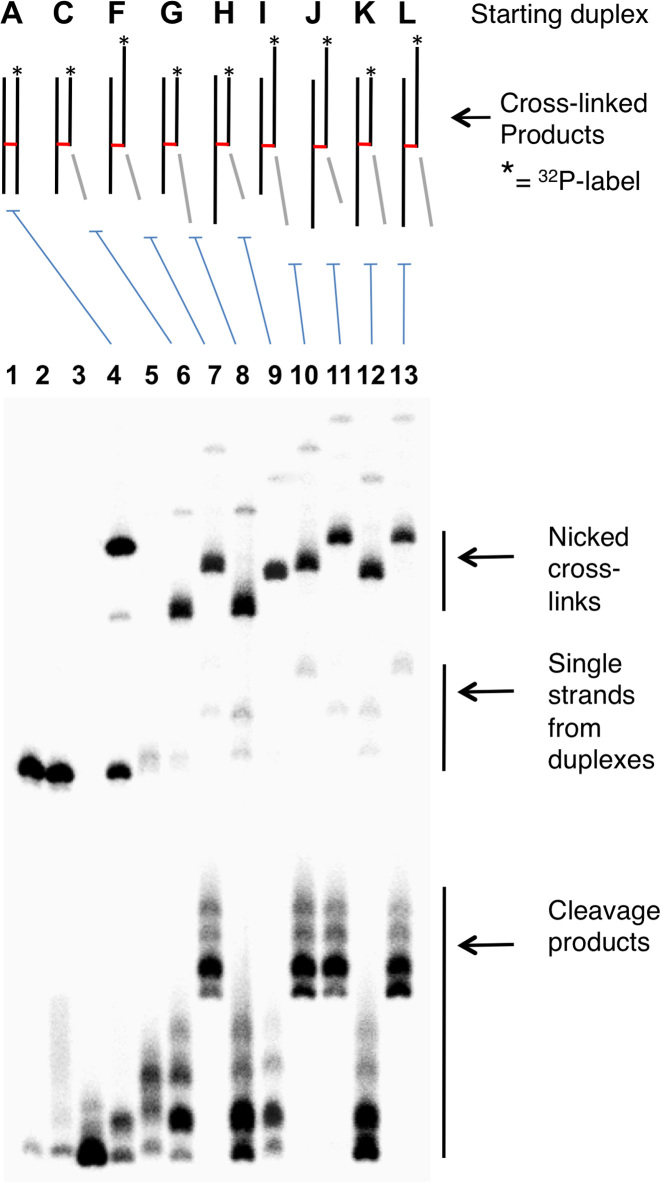Figure 3.
Gel mobility studies provide evidence for the generation of nicked cross-linked DNA duplexes. Gel mobilities of cross-links generated from nicked duplexes G-M help define the size and structure of the species that gives the band of intermediate gel mobility between full length Ap-containing strand and the full-size cross-linked duplex B. Lane 1, size-marker consisting of the 5’-32P labeled uracil-containing oligonucleotide precursor to duplex A; Lane 2, freshly-prepared Ap-containing duplex A; Lane 3, Ap-containing duplex A subjected to piperidine work-up; Lane 4, formation of full-length cross-linked duplex B from duplex A; Lane 5, freshly-prepared, nicked 3’ddR5p-containing duplex C; Lane 6, formation of the nicked cross-linked duplex D from the nicked duplex C; Lanes 7–13, 3’ddR5p-containing DNA duplexes F-L were incubated in HEPES buffer (50 mM, pH 7.4) containing NaCl (100 mM) at 37°C to form the nicked, cross-linked duplexes. The 5’-32P-labeled oligodeoxynucleotides were resolved by electrophoresis on a 20% denaturing polyacrylamide gel, and the radioactivity in each band quantitatively measured by phosphorimager analysis. Sequences used in this experiment are shown in Supplementary Figure S3.

